UPSC Daily Current Affairs: 10th March 2025 | Current Affairs & Hindu Analysis: Daily, Weekly & Monthly PDF Download
GS3/Economy
World Spice Organisation (WSO)
Why in News?
India holds the title of being the largest producer and exporter of spices globally; however, its share in the international seasoning market is a mere 0.7%. In contrast, China accounts for 12% and the USA for 11% of the market.
- The World Spice Organisation (WSO) was established in 2011 in Kochi, Kerala, the spice capital of India.
- India exports a significant amount of spices, but most are whole spices rather than value-added products.
- Emerging competitors in the spice trade include Vietnam, Indonesia, Brazil, and China.
Additional Details
- World Spice Organisation (WSO): This not-for-profit organization focuses on food safety, sustainability, and market development in the spice industry, and collaborates with various stakeholders including farmers and global spice associations.
- The WSO works with organizations such as the Spices Board India and participates in food safety regulations like FSSAI and ISO.
- Current Export Scenario: India exported spices worth $4.25 billion in 2023-24, accounting for a 12% share of global spice exports.
- India produces approximately 75 of the 109 varieties recognized by the International Organization for Standardization (ISO).
- Major spices produced include pepper, cardamom, chili, ginger, turmeric, and cumin, with chili being the top export earner.
In conclusion, while India is a leader in the spice production sector, there is a pressing need to enhance its share in the global market by focusing on value-added products and addressing emerging competition.
GS2/Polity
Supreme Court Limits Arrest Powers of Officers Under CGST and Customs Acts
Why in News?
The Supreme Court, in the case of Radhika Agarwal v. Union of India, has established that officials who exercise powers of arrest, search, and seizure under the Customs Act, 1962, and the CGST Act, 2017, must comply with the same restrictions as police officers under the CrPC, 1973. This ruling aims to prevent the misuse of these provisions and aligns with the Court's ongoing efforts to limit the powers of prosecuting agencies.
- The Supreme Court clarified that while Customs and CGST officials are not police officers, they have similar investigative powers.
- Officials must adhere to procedural restrictions similar to those of police officers in charge of a police station.
- The provisions of the CrPC apply to special laws unless explicitly overridden by the special act.
Additional Details
- Rights of the Arrested Person:Customs and CGST officers must follow essential procedural safeguards, including:
- Presentation before a magistrate within 24 hours of arrest.
- Informing a family member or friend about the arrest.
- Allowing the arrestee to have an advocate present during interrogation.
- Cognizable vs. Non-Cognizable Offences: Under Section 104(4) of the Customs Act, certain offences such as smuggling prohibited goods are cognizable, allowing officers to arrest without a warrant. All other offences are classified as non-cognizable requiring magistrate approval for arrest.
- The SC extended safeguards from Arvind Kejriwal v. Directorate of Enforcement (2025) to Customs and CGST officials, emphasizing that arrests without warrants necessitate strict conditions.
- Material evidence must be present for arrests; mere suspicion is insufficient.
In conclusion, the Supreme Court's ruling serves to protect the rights of individuals against arbitrary arrests by ensuring that law enforcement officials follow established procedures, reflecting a commitment to uphold constitutional rights while balancing the powers of tax enforcement.
GS2/Polity
Who are Koch-Rajbongshis?
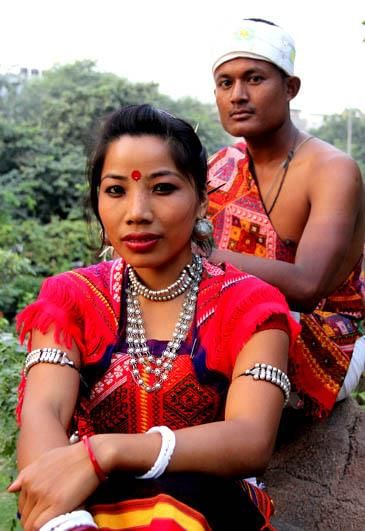 Why in News?
Why in News?
Ahead of the Home Minister's three-day visit to Assam, the Koch-Rajbongshis have reiterated their demand for Scheduled Tribe (ST) status, highlighting their cultural and historical significance in the region.
- The Koch Rajbongshi community has roots in the ancient Koch kingdom.
- They are recognized as indigenous people of South Asia and inhabit several regions including Assam, Northern Bengal, and parts of Nepal and Bhutan.
- Their language, Rajbongshi, has around one crore speakers and possesses a complete grammatical structure.
- The community primarily engages in agriculture and has various religious beliefs, including Hinduism, Islam, Christianity, and Buddhism.
Additional Details
- Koch Rajbongshi: This ancient tribe is known by several names, including Rajbanshi and Rajvanshi, with the term "Rajbongshi" translating to "royal community."
- Geographical Distribution: They currently reside in lower Nepal, Northern Bengal, North Bihar, Northern Bangladesh, Assam, parts of Meghalaya, and Bhutan. Historically, these areas were part of the Kamata kingdom.
- Language: The Rajbongshi language is spoken by approximately ten million individuals, as per the 2001 census, and is fully developed in terms of grammar.
- Religion: The majority of the Koch Rajbongshis practice Hinduism, though a significant number have adopted Islam. There are also followers of Christianity and Buddhism within their community.
- Lifestyle: Traditionally, they were animists and their close association with nature continues to influence their way of life, with agriculture being their primary means of livelihood.
The Koch-Rajbongshi community's demand for ST status reflects their desire for recognition and support in preserving their cultural identity and improving their socio-economic conditions.
GS3/Science and Technology
DULCIBELLA CAMANCHACA
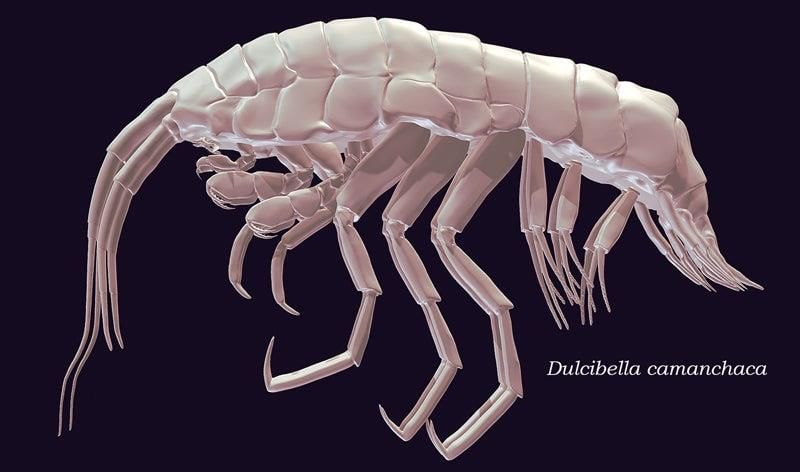 Why in News?
Why in News?
Marine biologists have recently identified a new species of amphipod known as Dulcibella camanchaca, discovered in the profound depths of the Atacama Trench. This finding emphasizes the remarkable diversity of life forms that have adapted to survive in some of the planet's most extreme environments.
- Dulcibella camanchaca is a newly discovered species found at depths nearing 8,000 meters (26,000 feet) in the South Pacific Ocean, adjacent to Chile.
- The Atacama Trench features extreme conditions such as intense pressure, very low temperatures, and total darkness.
Additional Details
- Physical Characteristics:
- Size: The amphipod measures about 4 centimeters (1.6 inches) in length, making it larger than many of its counterparts found at similar depths.
- Appearance: Dulcibella camanchaca possesses specialized appendages that are tailored for capturing and consuming smaller crustaceans, showcasing its predatory behavior.
- Ecological Role:
- Predatory Behavior: Unlike many deep-sea amphipods that scavenge, Dulcibella camanchaca actively hunts for its food, utilizing its unique appendages for predation.
- Adaptations: This species exhibits adaptations that enable it to thrive in the hadal zone, which includes depths ranging from 6,000 to 11,000 meters, marking it as one of the deepest-living predators known to science.
The discovery of Dulcibella camanchaca not only adds to our understanding of biodiversity in extreme environments but also highlights the resilience of life in the deep ocean.
GS3/Science and Technology
India's Semiconductor Manufacturing
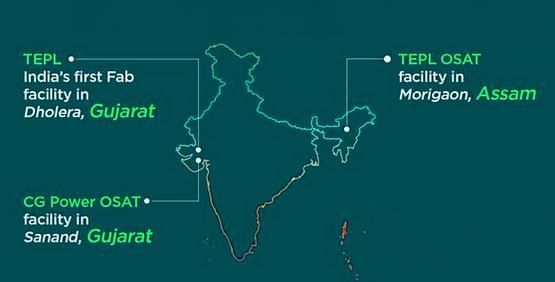 Why in News?
Why in News?
India is preparing to launch its first domestically produced semiconductor chip in 2025. This initiative is part of a broader strategy to decrease the nation's reliance on semiconductor imports, which have escalated significantly over the last decade.
- The Semicon India Programme was initiated in 2021 to foster the semiconductor and display manufacturing ecosystem.
- Five semiconductor manufacturing and assembly facilities are currently being constructed under this program.
- Notable projects include the Tata Semiconductor Assembly and Test Facility in Morigaon, Assam, and the Dholera Semiconductor Fabrication Facility in collaboration with Taiwan's Powerchip Semiconductor Manufacturing Corporation.
- However, actual expenditures under the Semicon India Programme have consistently lagged behind budgeted amounts.
India's Semiconductor Import Dependency
- Significant Imports:India depends heavily on semiconductor imports, particularly:
- Monolithic Integrated Circuits (ICs): Utilized in CPUs, smartphones, automobiles, medical devices, and industrial automation.
- Memory Chips: Comprising both volatile (RAM) and non-volatile (NAND flash) types.
- Amplifiers: Essential for wireless communication and audio equipment.
- Import Trends (FY16-FY24):
- Monolithic IC imports increased by 2,000%.
- Memory chip imports surged by 4,500%.
- Amplifier imports rose by 4,800%.
- As of FY25, semiconductor imports account for a larger share of total imports, with monolithic ICs representing 2.09% of total imports compared to 0.19% in FY16.
Major Semiconductor Suppliers to India
- China has been the top supplier, except in FY19.
- Other significant sources include Hong Kong, Japan, South Korea, Singapore, and Taiwan.
Challenges in India's Semiconductor Ecosystem
- Despite new facilities, India has yet to make substantial progress in critical areas such as:
- EDA (Electronic Design Automation) Software: Vital for chip design.
- Core IP (Intellectual Property): Essential patents for semiconductor technology.
- Wafers: Crucial raw materials for chip fabrication.
- Fab Tools and ATP (Assembly, Testing, and Packaging) Tools: Necessary machinery for semiconductor manufacturing.
- Chip Design Capabilities: India needs to invest more in research and development to create indigenous chip designs.
In conclusion, while the Semicon India Programme is a significant step towards enhancing India's semiconductor manufacturing capabilities, challenges remain in various technical and infrastructural areas that need to be addressed to achieve self-sufficiency in this critical sector.
GS1/Indian Society
India’s Obesity Problem
 Why in News?
Why in News?
PM Modi recently addressed the issue of obesity during a public speech in Silvassa, identifying it as a significant factor contributing to various diseases. He emphasized the need for Indians to lower their oil consumption and referenced alarming projections from The Lancet predicting that 440 million people in India could be obese by the year 2050.
- Obesity is a growing concern globally, with significant implications for health.
- India is experiencing a rapid increase in obesity rates, particularly among children.
- The rise in obesity is linked to changes in dietary habits and lifestyle.
Additional Details
- Obesity Trends:By 2021, there were 2.11 billion overweight or obese individuals worldwide, representing 45% of the global population. The most affected countries included:
- China: 402 million
- India: 180 million
- USA: 172 million
- Brazil: 88 million
- Russia: 71 million
- Mexico: 58 million
- Indonesia: 52 million
- Egypt: 41 million
- Defining Obesity:Obesity is typically assessed using the Body Mass Index (BMI), which is calculated as a person's weight in kilograms divided by the square of their height in meters:
- BMI > 30: Obese
- BMI 25-30: Overweight
- New classifications of obesity consider additional factors such as waist circumference and the presence of obesity-related symptoms to provide a more accurate diagnosis.
- Obesity-related health risks include:
- Type-2 diabetes
- Heart disease
- Certain types of cancer
- Increased susceptibility to infections, including severe diseases like COVID-19
- The rising prevalence of obesity in India is alarming, especially among children, with a 244% increase in childhood obesity over the last 30 years.
- Causes of the Obesity Epidemic:Key contributors include:
- Increased consumption of calorie-dense foods high in sugar, salt, and fats.
- Replacement of traditional diets with processed foods.
- Shift of multinational corporations targeting low- and middle-income countries with less stringent regulations.
To combat the obesity crisis, several solutions are proposed, including promoting traditional food systems, implementing taxes on unhealthy products, strengthening healthcare responses, and expanding research on obesity interventions. These measures are essential to address the growing health risks associated with obesity in India.
GS2/Governance
The Empowerment of India’s Women with Bold Policies
 Why in News?
Why in News?
International Women’s Day on March 8 serves as a timely reminder of the progress made toward gender equality and the work that remains. India has made notable strides in empowering women, with government policies playing a crucial role in improving access to sanitation, clean water, financial inclusion, and entrepreneurship. These initiatives have not only enhanced women’s daily lives but have also reshaped their roles in governance, the workforce, and community leadership.
- Government initiatives have significantly improved women’s access to sanitation and clean water.
- Financial inclusion programs have empowered women to engage in banking and entrepreneurship.
- Women’s representation in governance has increased, allowing for more community-centered policies.
- Digital connectivity has opened new avenues for women entrepreneurs.
Additional Details
- Sanitation and Clean Water: The Swachh Bharat Abhiyan has constructed over 116 million household toilets, enhancing security and dignity for women in rural areas.
- Water Access: The Jal Jeevan Mission has provided safe drinking water to over 150 million households, reducing the time women spend fetching water and increasing their participation in economic activities.
- Financial Inclusion Initiatives: The Pradhan Mantri Jan Dhan Yojana has opened over 300 million bank accounts for women, promoting savings and independence.
- Women Entrepreneurs: The Stand-Up India Scheme has sanctioned over ₹53,609 crore, supporting 236,000 women entrepreneurs.
- Digital Connectivity: Initiatives like BharatNet and PM-WANI have expanded internet access, enabling women in rural areas to participate in online banking and e-commerce.
- Governance Representation: Women now constitute approximately 46% of elected representatives in Panchayati Raj Institutions, leading to improved community policies.
India’s strides in women’s empowerment through sanitation, financial inclusion, entrepreneurship, and governance are shaping a more inclusive and equitable society. The government’s targeted policies have not only improved women’s quality of life but have also unlocked economic and leadership opportunities. While progress is evident, sustaining this momentum requires continuous policy focus, investment in education, and the dismantling of socio-economic barriers.
GS2/International Relations
Key Facts about Vanuatu
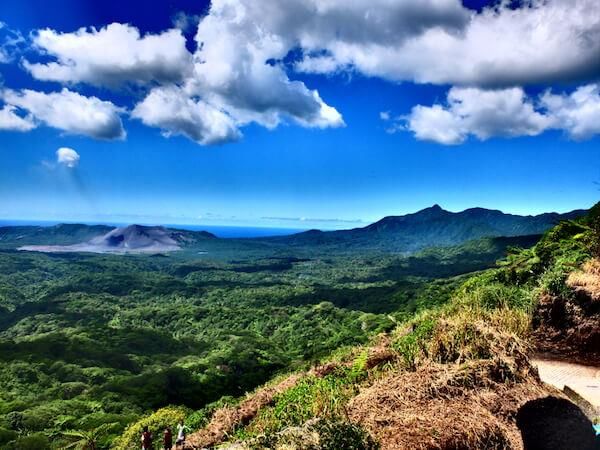 Why in News?
Why in News?
Fugitive former IPL chief Lalit Modi has recently sought to surrender his passport to the Indian High Commission in London after acquiring citizenship from Vanuatu, a small island nation located in the South Pacific.
- Vanuatu is an island nation composed of 83 islands, with only 65 of them inhabited.
- The country extends approximately 400 miles (650 km) in a Y-shaped formation and is situated east of Australia, north of New Zealand, and between Australia and Fiji.
- Port Vila, located on Efate Island, serves as the capital and largest city of Vanuatu.
- The currency used in Vanuatu is the vatu.
Additional Details
- Geography: Vanuatu features a diverse landscape that includes rugged mountains, high plateaus, rolling hills, coastal terraces, and offshore coral reefs. The islands are also home to several active volcanoes, notably Mount Yasur, recognized as one of the most accessible active volcanoes worldwide.
- Demographics: Approximately 94% of Vanuatu's population is indigenous Melanesian, and the national language is Bislama, a Creole language. The official languages include Bislama, English, and French.
- Government: Vanuatu operates under a parliamentary democracy and gained independence on July 30, 1980.
- Economy: The nation's economy relies on agriculture, tourism, fishing, and offshore financial services, with kava exports playing a crucial role. Vanuatu does not impose income tax, withholding tax, capital gains tax, inheritance tax, or exchange control. Instead, its revenue comes from VAT, tourism, and agricultural exports.
- Citizenship-by-Investment Programme: Vanuatu offers a citizenship-by-investment program, allowing foreigners to obtain citizenship in exchange for a financial contribution, typically around $150,000 USD. This program is attractive due to the visa-free travel it provides to holders of Vanuatu passports, who can visit 56 countries without a visa.
In summary, Vanuatu's unique geographical features, governmental structure, and economic opportunities, particularly its citizenship-by-investment program, make it a notable destination for individuals seeking new citizenship options.
GS2/Polity
Women in Judiciary - Progress, Challenges, and the Path Ahead
Why in News?
Women have achieved considerable milestones in the legal profession in India over the past century, beginning with Cornelia Sorabji, who became the first woman lawyer in 1924. Despite the increase in the number of women lawyers and judges, their representation in the higher judiciary remains notably low, highlighting ongoing challenges that need to be addressed.
- Women make up only 14.27% of High Court judges.
- Only two women currently serve as judges in the Supreme Court.
- Systemic barriers and biases affect women's judicial appointments.
- A gender-balanced judiciary is essential for legitimacy and inclusivity.
Additional Details
- Challenges in Higher Judiciary: Women constitute only 14.27% of judges in High Courts, with some High Courts having no women judges at all. For instance, the Allahabad High Court, which is the largest, has only three women judges, representing just 2% of its total.
- Age Factor: Women judges are typically appointed at an older age (averaging 53 years for women compared to 51.8 years for men), which decreases their likelihood of attaining senior judicial positions.
- Supreme Court Representation: Currently, only two women judges serve in the Supreme Court, with Justice Bela Trivedi set to retire in June 2025, leaving just one remaining woman judge. Since 2021, no women have been appointed to the Supreme Court, whereas 28 men have been appointed.
- Barriers to Appointment: Common justifications for the low representation of women include a perceived lack of eligible candidates and systemic gender bias that limits women's opportunities. Women face greater scrutiny than their male counterparts in the judicial appointment process.
- Government Reluctance: Since 2020, nine women recommended for High Court positions have not been confirmed, with five outright rejections.
To achieve gender equality in the judiciary, reforms are necessary. This includes:
- Reforming the Collegium System: Introduce transparent selection processes with clear, merit-based criteria and establish a structured application process for lawyers aspiring to be judges.
- Prioritizing Gender Diversity: Aim for at least one-third, if not half, of the higher judiciary to consist of women, alongside considerations for state, caste, and religious representation.
- Normalizing Women's Representation: Gender balance should be a core objective in judicial appointments, ensuring women judges are appointed in sufficient numbers to normalize their presence in the judiciary.
As India marks 75 years of its Supreme Court, a transformative shift towards gender equality in the judiciary is critical. Establishing a transparent, inclusive, and merit-driven judicial appointment system is essential for ensuring gender-balanced constitutional courts.
GS3/Science and Technology
What is Shingles Disease?
Why in News?
A recent global survey indicates that a significant portion (56.6%) of Indian participants aged 50 and above are largely unaware of shingles disease. This is concerning, as over 90% of adults in this age group carry the virus that can lead to shingles.
- Shingles, also known as herpes zoster, is a viral infection that results in a painful rash or blisters.
- The varicella-zoster virus, responsible for chickenpox, remains dormant in the body and can reactivate as shingles.
- The condition is most prevalent among individuals over the age of 50.
Additional Details
- Symptoms: Shingles can cause pain, itching, tingling, and numbness, along with fever, headache, chills, and fatigue. Although it is not life-threatening, the pain can be severe, and a common complication is postherpetic neuralgia, which prolongs the pain even after the rash has healed.
- Contagiousness: While shingles itself is not contagious, the varicella-zoster virus can be transmitted to someone who has never had chickenpox, resulting in chickenpox rather than shingles.
- Prevention: The Shingrix vaccine is available to help prevent shingles and its complications.
- Treatment: There is no cure for shingles; however, antiviral medications can lessen the severity and duration of the infection if administered early.
In summary, shingles is a viral infection that affects a significant number of older adults, and awareness is crucial for prevention and early treatment.
GS3/Environment
Madhav National Park
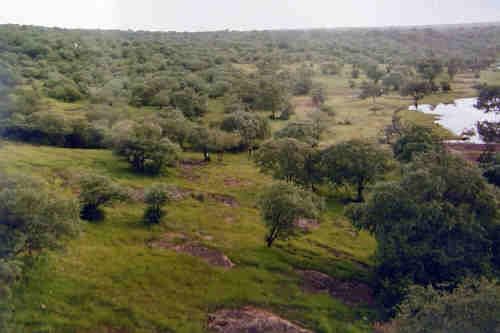 Why in News?
Why in News?
The Madhav National Park in Madhya Pradesh has recently been designated as the country's 58th tiger reserve as of March 9, 2025. This follows the introduction of three tigers, including two females, in 2023 as part of a state-led tiger reintroduction initiative.
- Madhav National Park is the 58th tiger reserve in India and the ninth in Madhya Pradesh.
- It was established in 1959 and was originally a hunting ground for the Scindia royal family.
- The park features significant lakes, including Sakhya Sagar and Madhav Sagar, formed by damming the Manihar River.
Additional Details
- Location: Madhav National Park is situated in the Shivpuri district of Madhya Pradesh, on the northern edge of the Central Highlands, characterized by Upper Vindhyan Hills and varying plateaus and valleys.
- Fauna:The park is home to diverse wildlife, including:
- Mammals: Indian gazelle (Chinkara), Chital (Spotted deer), Nilgai (Blue bull), Sambar deer, Four-horned antelope (Chousingha), Sloth bear, Leopard, Indian wolf, Jackal, Bengal fox, Dhole (Wild dog), Wild boar, and Porcupine.
- Reptiles: Mugger crocodile, various turtle species, and snakes.
- Birds: Numerous migratory birds visit the lakes during winter, including various geese, ducks, and waders.
- Historical Significance: George Castle, built in 1911 by Madho Rao Scindia, is located at the highest point of the park (484 meters) and was originally intended for a visit by King George V, who never arrived.
- Conservation Efforts: In January 2022, a 248-hectare area surrounding Sakhya Sagar Lake within the park was designated as a Ramsar site, highlighting its international significance as a wetland.
The designation of Madhav National Park as a tiger reserve not only enhances conservation efforts but also emphasizes the importance of protecting India's rich biodiversity. Its historical significance and ecological diversity make it an important area for both wildlife and heritage.
GS3/Environment
Sharavathi Pumped Storage Project
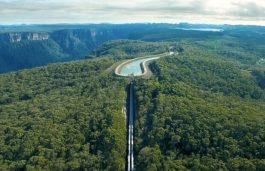 Why in News?
Why in News?
The Sharavathi pumped-storage project has recently gained final approval from the state government of Karnataka after receiving consent from the State Wildlife Board in January. This project has sparked controversy due to its environmental implications, particularly its proximity to the Sharavathi Lion Tailed Macaque Sanctuary.
- The project aims to generate a total capacity of 2,000 megawatts (MW) of power.
- It utilizes two existing reservoirs: Talakalale (upper reservoir) and Gerusoppa (lower reservoir).
- Water will be pumped to the upper reservoir during low electricity demand and released to generate power during high demand.
Additional Details
- Sharavathi River: The river flows westward in Karnataka, originating from the Western Ghats and emptying into the Arabian Sea. It is crucial for the region's hydroelectric power generation and biodiversity.
- The project infrastructure includes the Talakalale dam, which stands at 62.48 meters, and the Gerusoppa dam, which is 64 meters high.
This project highlights the ongoing balance between energy needs and environmental conservation in Karnataka, particularly concerning sensitive ecosystems.
|
44 videos|5271 docs|1113 tests
|
FAQs on UPSC Daily Current Affairs: 10th March 2025 - Current Affairs & Hindu Analysis: Daily, Weekly & Monthly
| 1. What are the key roles of the World Spice Organisation (WSO)? |  |
| 2. What recent ruling did the Supreme Court make regarding the arrest powers of officers under the CGST and Customs Acts? |  |
| 3. Who are the Koch-Rajbongshis, and what is their significance in Indian society? |  |
| 4. What is the DULCIBELLA CAMANCHACA and its importance? |  |
| 5. How is India addressing its obesity problem through policies? |  |
















